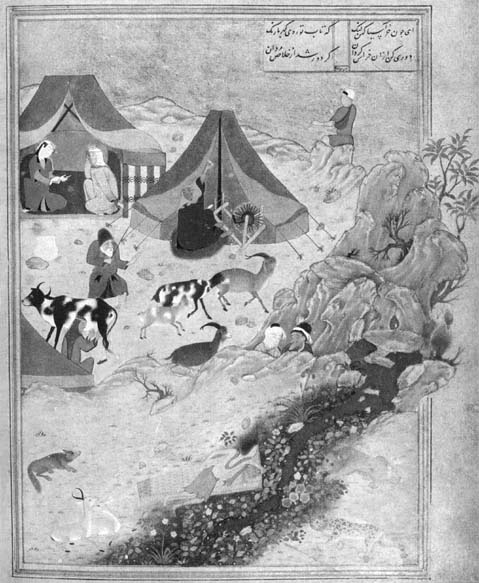http://www.washingtonpost.com/blogs/wonkblog/wp/2015/01/14/bitcoin-is-revealed-a-ponzi-scheme-for-redistributing-wealth-from-one-libertarian-to-another/?tid=hpModule_79c38dfc-8691-11e2-9d71-f0feafdd1394
Monthly Archives: January 2015
If you run out of things to talk about, criticize others.
I will start here.
http://nymag.com/scienceofus/2015/01/what-its-like-to-date-your-dad.html
This is a perfect example of two people, who happen to be related, with boundary issues. Now I understand boundary issues, believe me I do. But there are boundaries and there are Boundaries with a capital B.
This gentleman, who had not seen his daughter since she was five, reconnected with her at 17, and within several days, managed to take her virginity.
And now they plan to “move to New Jersey, where adult incest is legal.”
Payback!
So on the way home from the show last night, I had three car problems all at once. 1) oil pressure light, 2) code for engine cooland temperature problem, and 3) no heat. Coincidence? Or payback for speaking up about SLI? You be the judge. There were no problems when I parked. The car did not appear to have been tampered with while I was in the show.
I’ve added oil and coolant, tried to bleed the air out of the cooling system, but it now looks like I’m going to need at least a thermostat or possibly a new ECT sensor. Which means I’ll have to spend a bunch of time emptying out the car again so that it can be dropped off at the repair facility.

History Repeated, Delarcos & Plurals @ Black Cat
Warning – long post. Forgive me, for I have friends who may be interested in a detail level here. Also, please forgive the mixed use of past and present tense. I just don’t care enough to force my thoughts to conform.
I arrived early due to the timing of my day. Parked very close, less than half a block from the door to the club.
The first thing I noticed, after I parked and shut down the vehicle, was a street light going out, about half a block down from where I sat. Amused, I waited. And waited. It came back on, in that way those big streetlights (sodium?) tend to do — starting out white, then yellowing as it slowly grows to full brightness. After a while, it went out again. Then came back on again. Overheating? Delayed solar activation/deactivation due to ambient light? or was it SLI? How should I know, I’m not a scientist OR a paranormal investigator. I’ve got more important things to do than double-blind studies. You decide.
Doors were scheduled to open at 8pm, I had a bit of time to kill. Wandered around the neighborhood looking for suitable attractions. Whoa. A real live RECORD STORE (Som Records). With VINYL. Nope, not gonna do it. But it’s OPEN! Nope. Passing it by. [Hindsight: should have gone in, the way the Universe has been working with me lately, they probably have a mint copy of the Layla Cries album.]
Walked around the corner, and what do I see but a bar called Compass Rose. Is Poseidon himself calling me for pre-event drinks? Nope. Very careful about that. Because of that Los Angeles trip. And because I’m driving.
Okay, now the doors of the club are open. Maker’s on the rocks, quite a generous pour, almost feels like a double, $8. Stabb is down the bar picking up something. Then I’m sitting next to one of the Plurals at the bar, she’s ordering a pitcher of house lager for the band. Another Plural is standing nearby. I can tell by the not-quite-matching blue hair, and the fact that they are communicating with one another.
The evening has turned very tactile. First the sting of my earlobes, as well as the runny nose, because it was so damned cold outside. Then my lips are numb from the bourbon. A lovely kind of medical numbness.
The Plurals go onstage. The taller of the blue-hairs announces that she has forgotten her power cord for her Alesis , and will be simulating her keyboard using her voice. Much laughter is had, but she has the last laugh later, as she does things with her voice that keyboards only wish they could do, in their heart of hearts, in places they don’t talk about at parties.
I enjoyed their set a lot. Especially Look at the Nerds, and Rose Garden. They had some really fun B-52s kind of campy surf-like grooves (but somehow cooler), and “fake keyboard playing girl” had this adorable way of creating modesty with her hand as she bent her knees to retrieve her beer from the stage floor. (Her skirt was quite short). In another song (Rose Garden) she made a really unique “Whoop” sound. At the time I thought it sounded almost electronic, but looking back, you heard it here first, I BET THEY ARE CLOSET JUGGALOS. WHOOP WHOOP! Anyhow, they’re really fun, go see them if you can, you’ll enjoy them.
I spoke with Whoop fake keyboard girl after their set, I think she said she used to do opera.
Next up was the Delarcos, who I saw recently at Iota. Great set by them, I could hear them a little better this time, especially the lead guitar. I’m still trying to search my musical memory banks for things it sounds like. I’m not finding a lot, except the obvious vocal timbre and delivery similarities to Pere Ubu and maybe the Tritonian Nash-Vegas Polyester Complex -era No Trend (Copperhead, for example). They’re unique. I like their sound, their energy, and their understated humor. It’s difficult to hear in a barroom, so the Delarcos have been kind enough to put their lyrics (and chords!) online so that we can all sing (and play!) along. After listening to last night’s show again, I’m starting to feel like Delarcos might be the closest to the ROOTS of “this thing of ours.” I’m digging it. Musically, lyrically, and maybe more. Stabb pointed out during the gig, I think, that Ian Mackaye likened them to the Chumps, and that’s going way back into the DC punk vault:
For more on the Chumps, check out http://ducksbattlesatan.com/category/the-chumps/
Then came History Repeated, the headliner. This is what I came for, for personal reasons. See, History Repeated is fronted byJohn Stabb of Government Issue, who I saw over 31 years ago at my very first concert (bootleg available HERE) — I was just sixteen years old.
I was ecstatic to see that 31 years later, Stabb still has all the energy of a young punk rocker, and still brings it! In fact, he brings it by the case, and gives it all. Still theatrical after all these years, still willing to take injuries in the process. He’s very physical, as if putting everything he has into merely singing the song is not quite enough – as if he’s ADHD, and singing the song just doesn’t engage him enough, so while he’s putting in 100% at the mic, he’s putting in a whole bunch more to keep him occupied – wrapping cords around him, punching himself, falling over, gesturing wildly…
A couple of jump-down-into-the-crowd call and response moments. I missed the first one because I couldn’t hear the words that well. The second one was easy. When it was my turn, Stabb was in my face, with his hand on my shoulder and a mic between us, shouting “PUNK ROCK SONGS” — I replied enthusiastically, “DID NOT CHANGE THE WORLD!” At least I hope that’s what I was supposed to say. They sure changed MY world.
For the last song, Stabb invited Mike (from the Delarcos) on stage to improv some sax. In the middle of the song, Stabb fell onto the dance floor and someone put a chair on top of him.
Ian Mackaye (Teen Idles, Minor Threat, Embrace, Fugazi, The Evens) was spectating sidestage for most of the show. He looked like he was enjoying it. I don’t know if anyone else was hoping for a reason for him to be brought on stage for something, but I kinda was. I never got around to seeing him during the DC heyday, but I was fortunate that The Evens came to Fredericksburg in late 2012 to play a bookstore. Had a really enjoyable time there too.
I got the feeling the light crowd was largely friends of the bands (like me) and veterans of the early DC HC scene, either players or just folks that showed up (back then), also like me.
Fragile Things
 I’m having a wonderful time absorbing (via audiobook) Neil Gaiman’s short story collection, Fragile Thing: Short Stories and Wonders. I’ve come to it awkwardly — I am ashamed to admit that it is my first exposure to Gaiman, despite his being on my to-do list for a number of years now — and I suspect it’s not the path most people take. But it was convenient, and here I am.
I’m having a wonderful time absorbing (via audiobook) Neil Gaiman’s short story collection, Fragile Thing: Short Stories and Wonders. I’ve come to it awkwardly — I am ashamed to admit that it is my first exposure to Gaiman, despite his being on my to-do list for a number of years now — and I suspect it’s not the path most people take. But it was convenient, and here I am.
He has clearly mastered the clever, the horror, the inventive plot twist, and the devil in the details, but he also has the skill of embedding realities between the lines that may be unprintable, unspeakable, even undefinable, in such a way that the reader will receive the transmitted message just the same. I have other Gaiman works on deck. If you have a favorite you’d like to recommend, or one that you know would particularly appeal to me, for whatever reason, please feel free to share.
Looking forward to tomorrow night!
SLIders: Street Light Interference…
I remember when I was working for law firms in downtown DC. This had to be in the 1990s. I was leaving work in the dark or semi-darkness, so this would have been in the winter. My memory tells me I was walking toward DuPont Circle Metro. There was a certain side street that I’d walk through (I was obsessed with patterns at the time, so I regularly took the same path home — as opposed to later, when I became obsessed with entropy and would take extraordinary measures to AVOID patterns — and along this path, there was a certain streetlight that, more often than not, would switch off as I passed underneath it. There were stages of acknowledgement of this phenomenon. First, acknowledgement that a pattern was developing. Then, anticipation. Then, familiarity, and some sort of odd internal pleasure (confirmation bias? validation?) when it occurred. Then, wondering what the phenomenon was. Then the realization that to even bring up the possibility that it could be anything but malfunction and coincidence would lump me in with the crazies. As in, even further than I had already lumped myself in by my strange associations, writings and cultivated friendships.
Looking back, I should have known there was probably a working theory. But back then, information was not as plentiful or easy to come by as it is now. Even I, who collected fringe texts and even ran fringe text-based bulletin board systems (BBSes), had not come across this particular phenomenon discussed in print at the time.
This weekend I decided to look into it further, and discovered that there are texts regarding the phenomena. It’s called Street Lamp Interference, or SLI, and the people who cause it, or to whom it occurs, or who notice it, are called SLIders.
http://mysteriousuniverse.org/2013/05/streetlamp-interference-a-modern-day-paranormal-mystery/
Murder Ballad of the Week, 1/12/15: Omie Wise
One of my favorites, but pretty brutal. Omie is courted by John Lewis, until she becomes pregnant, and he decides he has to kill her. Over 200 years later, and some men still make that fatal decision.
First recorded version in 1927. The murder in question occurred in 1807.
http://en.wikipedia.org/wiki/Omie_Wise
Layla and Majnun
(another source references this old, old story as the source for Clapton’s inspiration for the song Layla)
Follow Your Heart: The Story of Layla and Majnun
By J. T. Coker
Layla and Majnun have been characters for Sufi poets, as Krishna was for the poets of India. Majnun means absorption into a thought and Layla means the night of obscurity. The story is from beginning to end a teaching on the path of devotion, the experience of the soul in search of God. — Pir-o-Murshid Inayat Khan
The story of Layla and Majnun is one of the most popular in the Islamic world, enduring in legends, tales, poems, songs, and epics from the Caucasus to Africa and from the Atlantic to the Indian Ocean. Scholars find good reasons to believe that the central character — Qays, nicknamed Majnun (Madman) — lived in northern Arabia in the second half of the seventh century, five hundred years before the poet Nizami. At the behest of the Transcaucasian chieftain Shervanshah, Nizami collected many of the widely dispersed traditional versions and wove them into his great narrative poem.
No one knows the number of translations of Nizami’s work in the many languages encompassed by Islamic religious culture, but at least forty Persian and thirteen Turkish versions are known, and one scholar states that there are actually over a hundred versions in those two languages alone. An English translation appeared in 1836 which relied on an incomplete text with later additions by lesser poets (this text was used by Eric Clapton in the late 1970s for certain lyrics on his recording Layla and Other Love Songs). The translation by Dr. Rudolf Gelpke [The Story of Layla and Majnun by Nizami, trans. and ed. by Dr. Rudolf Gelpke, English version in collaboration with E. Mattin and G. Hill, Omega Publications, New Lebanon, NY, 1997; all page references are to this edition] published originally in 1966, offers insights into medieval Arabic culture and mores. Though cast in prose, poetry lovers will catch fulfilling glimpses of Nizami’s poetic and mystic genius. Moreover, the Omega edition includes the work’s final chapter, translated by Zia Inayat Khan and Omid Safi.
The story begins with the Sayyid, a man of wealth, power, and prestige, desiring a son and heir. He importunes Allah, who grants his request. The beauty of his son Qays “grew to perfection. As a ray of light penetrates the water, so the jewel of love shone through the veil of his body.” At the age of ten, Qays goes to school and meets his kismet/fate, Layla. “Does not ‘Layl’ mean ‘night’ in Arabic? And dark as the night was the color of her hair.” Love struck them both; others noticed, tongues wagged, and Qays first tastes bitterness. He refrains from seeing her, but his heart breaks and he begins to slip into melancholy. Layla’s tribe, to protect her (and their) honor, deny her right to see him, and he falls into madness: “A madman he became — but at the same time a poet, the harp of his love and of his pain.”
In time Majnun runs away into the wilderness, becoming unkempt, not knowing good from evil. His father takes him on pilgrimage to Mecca, to seek God’s help in freeing him, but Majnun strikes the Kaaba and cries “none of my days shall ever be free of this pain. Let me love, oh my God, love for love’s sake, and make my love a hundred times as great as it was and is!” He continues to wander “like a drunken lion,” chanting poems of Layla’s beauty and his love. Many come to hear him. Some write down the poems he spontaneously speaks.
Meanwhile, Layla holds their love quietly so none will know
she lived between the water of her tears and the fire of her love, . . .
Yet her lover’s voice reached her. Was he not a poet? No tent curtain was woven so closely as to keep out his poems. Every child from the bazaar was singing his verses; every passer-by was humming one of his love-songs, bringing Layla a message from her beloved, . . . — p. 40
Refusing suitors, she writes answers to his poems and casts them to the wind.
It happened often that someone found one of these little papers, and guessed the hidden meaning, realizing for whom they were intended. Sometimes he would go to Majnun hoping to hear, as a reward, some of the poems which had become so popular. . . .
Thus many a melody passed to and fro between the two nightingales, drunk with their passion. — p. 41
Eventually Layla is married to another, but refuses conjugality. Being in love, her husband accepts her condition of an outward marriage only. Majnun learns of the marriage and of her faithfulness. Neither his father nor his mother, when near death, can induce him to return to his people. Wild animals, loving rather than fearing him, congregate in his presence, protecting him. One night Majnun prays to Allah, thanking Him for making him the pure soul he now is and asking God’s grace. He sleeps, and in his dream a miraculous tree springs from the desert, from which a bird drops a magic jewel onto his head, like a diadem.
An old man, Zayd, helps Layla and Majnun to exchange letters and finally to meet, though she cannot approach him closer than ten paces. Majnun spontaneously recites love poetry to her, and at dawn they go their separate ways. Nizami asks:
For how long then do you want to deceive yourself? For how long will you refuse to see yourself as you are and as you will be? Each grain of sand takes its own length and breadth as the measure of the world; yet, beside a mountain range it is as nothing. You yourself are the grain of sand; you are your own prisoner. Break your cage, break free from yourself, free from humanity; learn that what you thought was real is not so in reality. Follow Nizami: burn but your own treasure, like a candle — then the world, your sovereign, will become your slave. — p. 148
After the death of Layla’s husband, she openly mourns her love for Majnun, and dies shortly thereafter. Majnun hears of her death and, mad with grief, repeatedly visits her tomb. He dies and is buried beside his beloved.
“Majnun Dies on Layla’s Tomb,” Bihzad (c. 1495)
In a dream, Zayd, who tends their joint grave, has a vision of them in paradise, where an ancient soul tells him:
These two friends are one, eternal companions. He is Majnun, the king of the world in right action. And she is Layla, the moon among idols in compassion. In the world, like unpierced rubies they treasured their fidelity affectionately, but found no rest and could not attain their heart’s desire. Here they suffer grief no more. So it will be until eternity. Whoever endures suffering and forebears in that world will be joyous and exalted in this world. — p. 176
On waking Zayd realized that
Whoever would find a place in that world must tread on the lusts of this world. This world is dust and is perishable. That world is pure and eternal. . . . Commit yourself to love’s sanctuary and at once find freedom from your ego. Fly in love as an arrow towards its target. Love loosens the knots of being, love is liberation from the vortex of egotism. In love, every cup of sorrow which bites into the soul gives it new life. Many a draft bitter as poison has become in love delicious. . . . However agonizing the experience, if it is for love it is well. — pp. 176-7
So ends Nizami’s poetic narrative of the story of Layla and Majnun, but to really appreciate and understand this work, it needs to be read, and savored, in full. Is their story a medieval soap opera of epic proportions? It is, if that’s what your heart hears. Is it a cautionary tale inculcating acceptance of earthly injustice and suffering in the Islamic faithful, who will be rewarded in the great by-and-by? It will surely serve, if that’s your concern. Is Majnun “Man” and Layla “Soul,” suffering because denied union while bounded by flesh? Yes, if your concern, your love, leads you to hear it that way. Is it an allegorical Sufi text, instructing seekers in practical means for awakening to the supernal reality of their true, spiritual nature? Only our hearts know for sure — Nizami bids us follow them.
17,318 Days on Earth
Tonight, Eve and I finally got around to watching Nick Cave’s film, 20,000 Days on Earth, released in the US in September, which, as you can imagine, marks his 20,000th day, in a sort of creative fashion, involving psychoanalysis, car rides with people that may not have actually been there, assembling pieces of his history for his museum of Important Shit, and mostly the creative process by which the 2013 album Push the Sky Away was created and recorded.
Highlights: Warren Ellis telling him that a particular phrase sounded like Lionel Richie; and a scene near the end where he’s watching Scarface with his kids.
I followed up the film by making Eve watch the official videos released for the two Murder Ballads duets back in 1995: Where the Wild Roses Grow, with Kylie Minogue, and Henry Lee, with PJ Harvey. I started showing her the Dylan version (Love, Henry from World Gone Wrong) and the Dick Justice version (1929, and included in Harry smith’s Anthology of American Folk Music in 1952), but she was too sleepy to hear any more.







